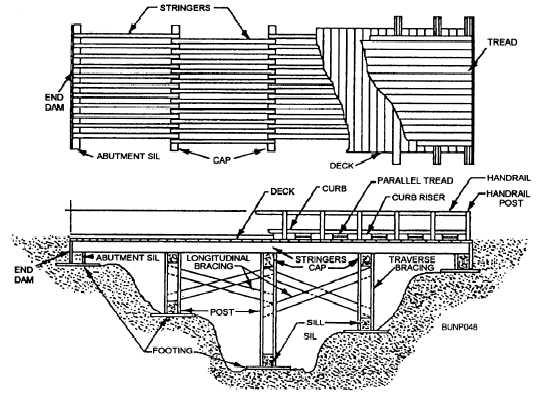CHAPTER 8 HEAVY CONSTRUCTION
LEARNING OBJECTIVE: You will be able to describe the procedures for erecting heavy timber bridges, shoring, pile construction, waterfront structures, timber fasteners and connectors, and steel frame structures. Identify the different types of pile-driving equipment, types of piles, and understand the many safety hazards associated with pile driving.
As a Builder, you may perform various construction operations involving heavy structures. This chapter describes equipment, terminology, methods, and techniques of heavy construction. Since heavy construction is hazardous work, the use of safe working practices at all times can prevent injuries to personnel and damage to equipment. This chapter explains the methods of constructing heavy timber structures and waterfront structures in terms of contingency operations vice commercial or industrial construction.
As a general rule, the term heavy construction refers to the type of construction in which large bulks of materials (over 5 inches thick) and extra-heavy struc- tural members are used, such as steel, timber, concrete, or a combination of these materials. In the Naval Construction Force (NCF), heavy construction includes the construction of bridges, shoring operations, waterfront structures, and steel frame structures.
BRIDGE CONSTRUCTION
A bridge is a structure used to carry traffic over a depression or an obstacle, and it generally consists of two principal parts as follows: the lower part, or SUBSTRUCTURE and the upper part, or SUPERSTRUCTURE. When a bridge is supported only at its two end supports, or abutments, it is called a single-span bridge. A bridge with one or more intermediate supports, as shown in figure 8-1, is known

Figure 8-1. - A multispan (trestle-bent) bridge.
Continue Reading